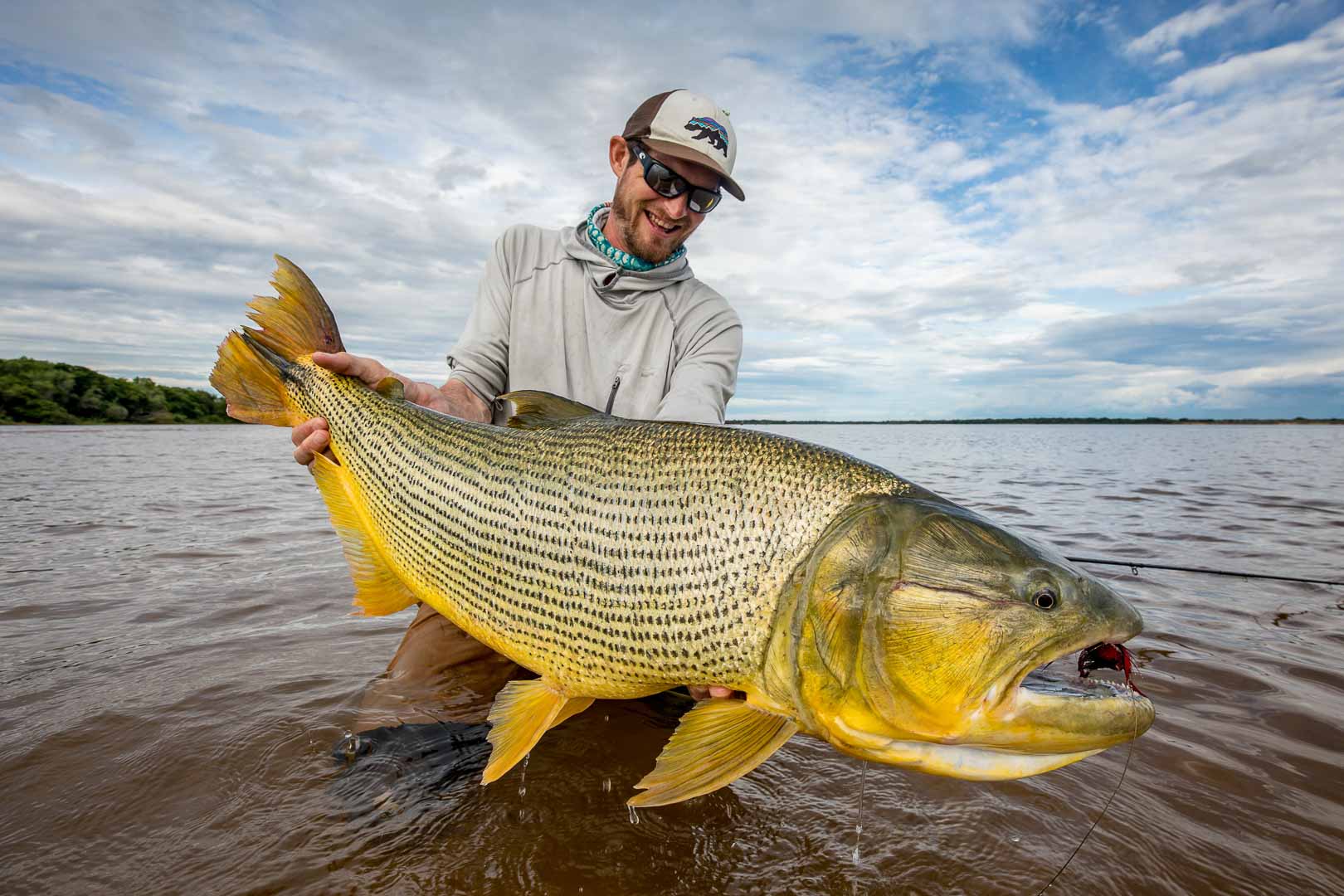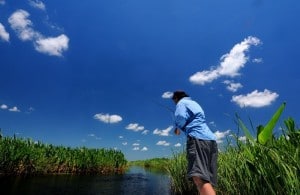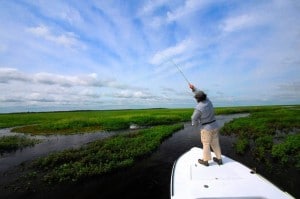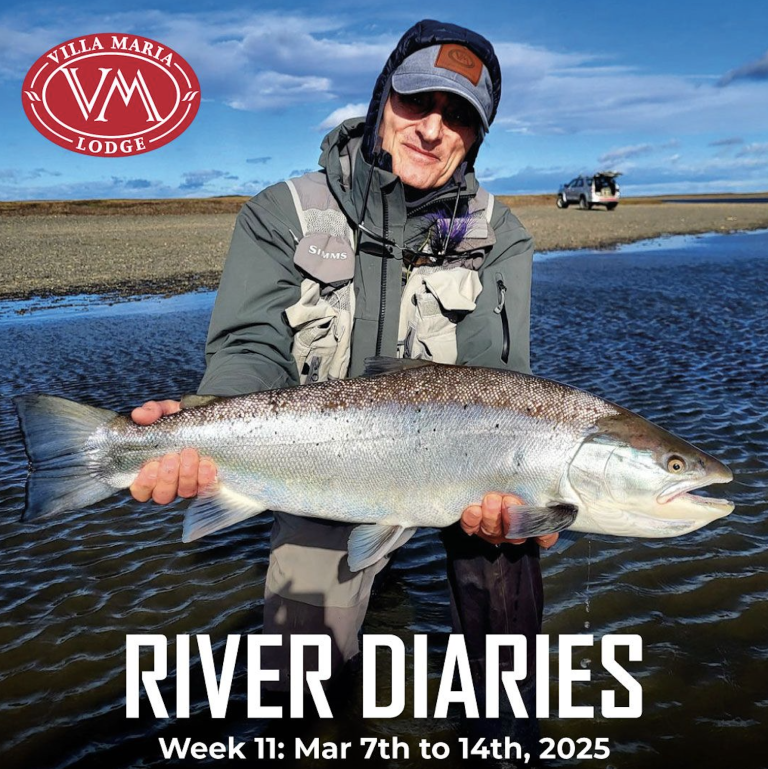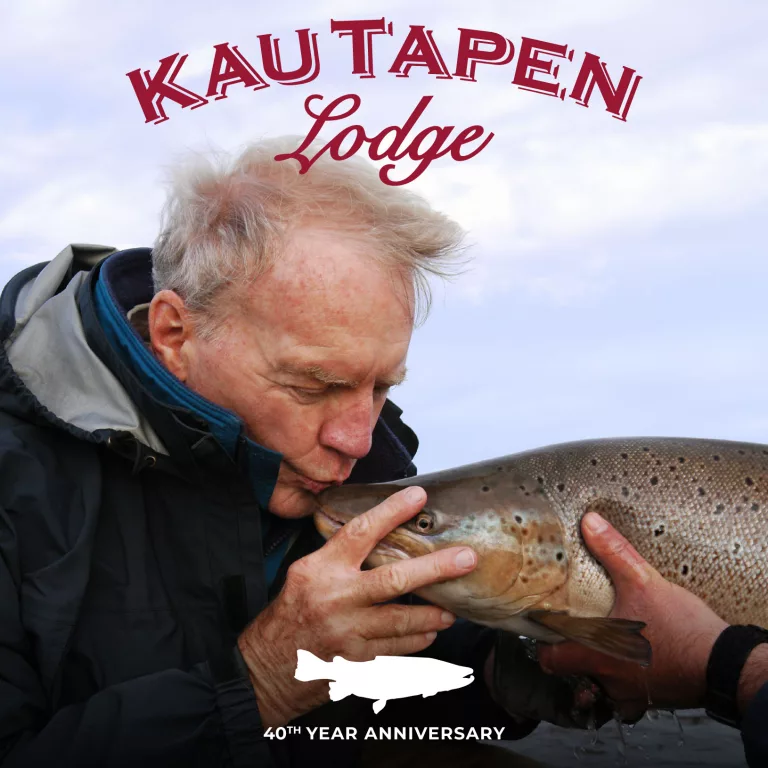Presentation
Depending on the weather conditions and environment requires different presentations. For instance casting close quarters for Dorado in very calm water with little wind when the Dorados are less active requires a very different technique. The angler is required to present the fly with as little disturbance as possible. This means the cast should allow the fly and line to land without dissipating large volumes of water. During the retrieve the rod tip should be positioned under the water. This will allow the fly to be stripped without the line creating heavy disturbance on the water. However during times when the Dorado is active a heavy presentation on the surface of the water can attract the fish more.
During times with high winds the presentation is not as important. This is due to water already having a lot of turbulence on the surface because of the wind. This therefore masks the disturbance made when the fly and line is presented on the water. The strip also doesn’t need to be as delicate as fishing with no wind.
Casting
Casting requires a different approach depending on the environment. For instance casting in the Parana river at large logs and trees near the bank requires a technical approach. When casting at the logs it is important to try and make casts both in front and behind the logs. This requires a cast close behind the log and a little in front. It is important to remember to compensate for where your fly land to allow the fly to pass the log. When casting at trees it is always good to try and present the fly under the tree near the bank to cover as much water as possible and secondly as fish use this habitat as cover. This is achieved by keeping the cast as low to the water as possible, keeping a tight loop and powerful cast. However this approach can be difficult to get right.
Casting in the Ibera marshlands requires a different approach. When casting in the small channels it is important to cast as close to the weed/bank as possible. Casts should be placed in to every hole and opening in the weed to cover as much water as possible. Anglers should be looking for areas and casting to places where weed in not able to be picked up by the hook to allow the fly to fish more efficiently for longer. This consists of areas in and around weed. When fishing extreme close quarters a small roll or overhead cast can be placed into small pockets and retrieved with the rod tip. Casting to small channels located over weed beds can be fished effectively by casting into taking a couple of strips before recasting the fly.
Mending
Mending the line is an important part of Dorado fishing depending on the environment. Using floating lines allows the angler to mend the line efficiently. For instance in the Iberia marshlands while using a floating line an angler can mend both up and downstream over weeds in the water. This mending allows the fly to fish more efficiently and for longer, as the cast doesn’t cause the fly to catch as much weed. This method can also be used to cast to harder to reach places by casting over the top of weed and mending the line in the appropriate direction around to cover more water. Using a sinking line doesn’t allow as much mending however once the line lands on the water a large mend upstream will firstly allow the line to sink more and secondly allow make the line fish better across the current of the water.
In the Parana river when fishing to logs mending can produce more productive fishing. When presenting a fly past the logs and upstream the fly can be fished without catching the logs. By making a large mend with the current over the logs the fly can be stripped through allowing for a more efficient presentation.
Stripping
Stripping speed can vary depending on the speed of the current and the type of water an angler is fishing. The strip must always be a long and consistent strip. However in some areas with a faster current a swung fly can sometimes be an effective approach. In areas with slow current a fast retrieve is most productive.
Equipment
Typically the use of 7-9wt rods is used for Dorado fishing. However this is depending on the size of the Dorado an angler is pursuing and distances needed to cast depending on the water body. Casting longer distances and chasing bigger Dorado requires a heavier rod. Whereas casting for smaller Dorado at shorter distances requires a lighter rod. Dorado fishing also requires the use of heavy streamers, therefore heavy weighted rods are needed to get the correct distance, presentation and accuracy the environment demands.
